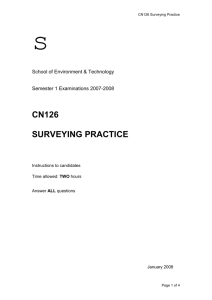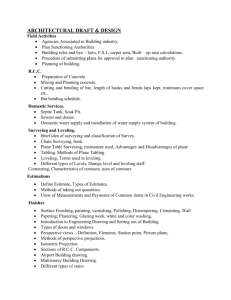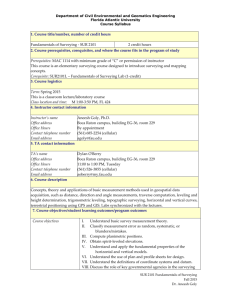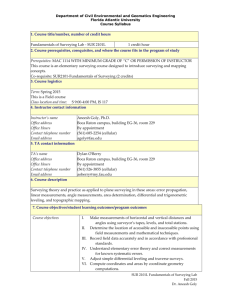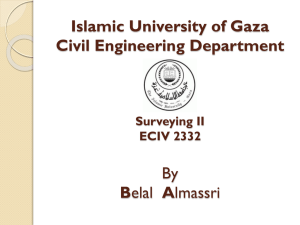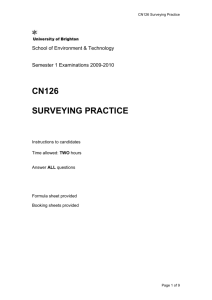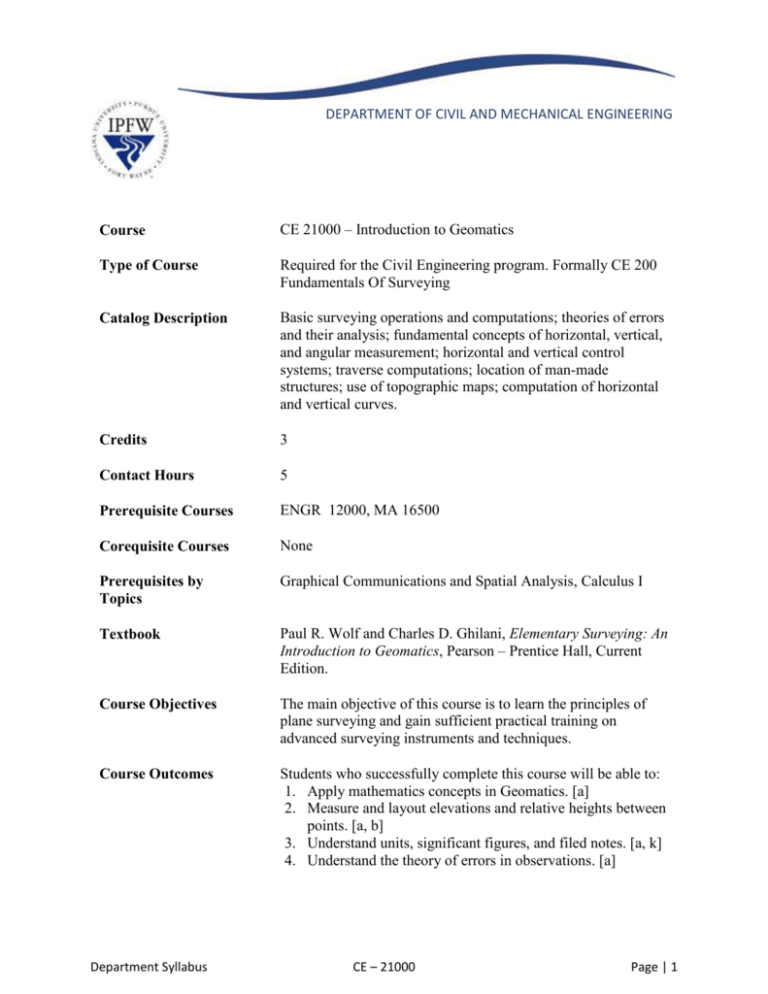
DEPARTMENT OF CIVIL AND MECHANICAL ENGINEERING
Course
CE 21000 – Introduction to Geomatics
Type of Course
Required for the Civil Engineering program. Formally CE 200
Fundamentals Of Surveying
Catalog Description
Basic surveying operations and computations; theories of errors
and their analysis; fundamental concepts of horizontal, vertical,
and angular measurement; horizontal and vertical control
systems; traverse computations; location of man-made
structures; use of topographic maps; computation of horizontal
and vertical curves.
Credits
3
Contact Hours
5
Prerequisite Courses
ENGR 12000, MA 16500
Corequisite Courses
None
Prerequisites by
Topics
Graphical Communications and Spatial Analysis, Calculus I
Textbook
Paul R. Wolf and Charles D. Ghilani, Elementary Surveying: An
Introduction to Geomatics, Pearson – Prentice Hall, Current
Edition.
Course Objectives
The main objective of this course is to learn the principles of
plane surveying and gain sufficient practical training on
advanced surveying instruments and techniques.
Course Outcomes
Students who successfully complete this course will be able to:
1. Apply mathematics concepts in Geomatics. [a]
2. Measure and layout elevations and relative heights between
points. [a, b]
3. Understand units, significant figures, and filed notes. [a, k]
4. Understand the theory of errors in observations. [a]
Department Syllabus
CE – 21000
Page | 1
5. Carry out profiling and grid leveling, for generation of
profiles, contour maps, and earth works computations. [e, k]
6. Measure horizontal and vertical angles. [b]
7. Determine coordinates of traverse (control) and surveyed
objects. [b, k]
8. Conduct quality control of the surveying works (e.g.
checking of field results and computations), emphasizing
ethical and professional responsibility. [c, k]
9. Design basic horizontal alignment of a curve. [c]
10. Design basic vertical alignment of the curve. [c]
11. Function in a team during field work. [d]
12. Ability to use the techniques, skills, and modern surveying
equipment and computer tools necessary for engineering
practice. [c, e, k]
Lecture Topics
1. Introduction
2. Units, Significant Figures, and Field Notes
3. Theory of Errors in Observations
4. Leveling—Theory, Methods and Equipment
5. Leveling—Field Procedures and Computations
6. Distance Measurement
7. Angles, Azimuths, and Bearings
8. Total Station Instruments; Angle Measurements
9. Traversing
10. Traverse Computations
11. Coordinate Geometry in Surveying Calculations
12. Area
13. Horizontal Curves
14. Vertical Curves
Computer Usage
Low
Laboratory
Experience
High
Design Experience
Low
Coordinator
Suleiman Ashur, Ph.D., P.E.
Date
1 October 2015
Department Syllabus
CE – 21000
Page | 2


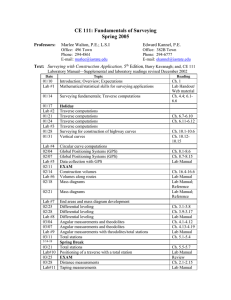
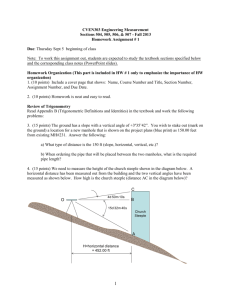
![Elementary Surveying [Opens in New Window]](http://s3.studylib.net/store/data/007206959_1-5874c882e65124652f9ab700273bfabf-300x300.png)
